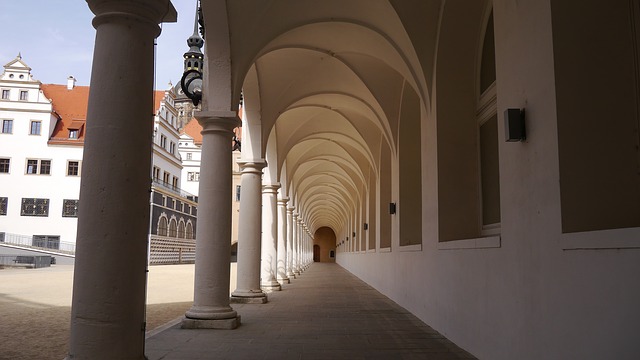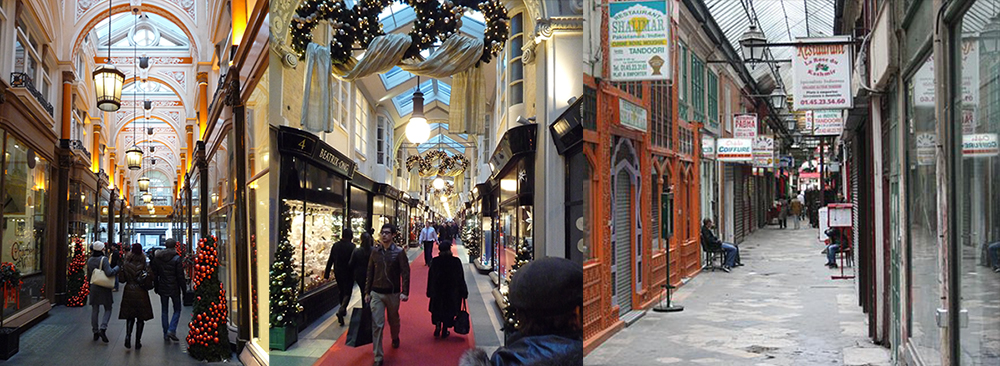Arcade
Contents |
[edit] What is an arcade?
In classical architecture, the term ‘arcade’ refers to a series of arches supported by columns or other vertical elements such as piers. This can be used to form a passageway between arches and a solid wall, or a covered walkway providing access to commercial buildings or markets. Arcades are structurally very strong, and so can carry large loads and stretch for large distances. Arcades have also featured in medieval cloisters, Islamic courtyards, Renaissance commercial streets, Middle Eastern bazaars and Baroque marketplaces.
[edit] Contemporary arcades
Arcades are also used in modern language to describe covered locations that house different types of activities, normally laid out in series or in a row, such as shop fronts or games machines: Shopping arcade or gaming arcade (also used in the singular called an arcade cabinet).
[edit] History of arcades
Arcades were first developed by the Romans, who took inspiration from ancient aqueduct designs. They used arcades to construct large wall structures; the most famous example being the Colosseum in Rome which has 80 arcaded openings on its first three storeys.
Roman arcades came to be distinguished by the use of pilasters that were attached to piers carrying an entablature. The form developed to become arches resting on the capitals of a row of columns. This style was also adopted during the Gothic period as a decorative element used to divide a church’s nave wall into three horizontal parts.
[edit] Related articles on Designing Buildings
- Agora.
- Arches.
- Architrave.
- Balustrade.
- Barrel vault.
- Blind arcade.
- Canopy.
- Classical orders in architecture.
- Cloister.
- Colonnade.
- Corridor.
- Courtyard.
- Difference between pillars and columns.
- Elements of classical columns.
- Flying buttress.
- Loggia.
- Narthex.
- Pedestal.
- Pergola.
- Pilaster.
- Pilotis.
- Portico.
- Pteron.
- Roman Colosseum.
- Spandrel.
- Vault.
- Walkway.
Featured articles and news
RTPI leader to become new CIOB Chief Executive Officer
Dr Victoria Hills MRTPI, FICE to take over after Caroline Gumble’s departure.
Social and affordable housing, a long term plan for delivery
The “Delivering a Decade of Renewal for Social and Affordable Housing” strategy sets out future path.
A change to adoptive architecture
Effects of global weather warming on architectural detailing, material choice and human interaction.
The proposed publicly owned and backed subsidiary of Homes England, to facilitate new homes.
How big is the problem and what can we do to mitigate the effects?
Overheating guidance and tools for building designers
A number of cool guides to help with the heat.
The UK's Modern Industrial Strategy: A 10 year plan
Previous consultation criticism, current key elements and general support with some persisting reservations.
Building Safety Regulator reforms
New roles, new staff and a new fast track service pave the way for a single construction regulator.
Architectural Technologist CPDs and Communications
CIAT CPD… and how you can do it!
Cooling centres and cool spaces
Managing extreme heat in cities by directing the public to places for heat stress relief and water sources.
Winter gardens: A brief history and warm variations
Extending the season with glass in different forms and terms.
Restoring Great Yarmouth's Winter Gardens
Transforming one of the least sustainable constructions imaginable.
Construction Skills Mission Board launch sector drive
Newly formed government and industry collaboration set strategy for recruiting an additional 100,000 construction workers a year.
New Architects Code comes into effect in September 2025
ARB Architects Code of Conduct and Practice available with ongoing consultation regarding guidance.
Welsh Skills Body (Medr) launches ambitious plan
The new skills body brings together funding and regulation of tertiary education and research for the devolved nation.
Paul Gandy FCIOB announced as next CIOB President
Former Tilbury Douglas CEO takes helm.
UK Infrastructure: A 10 Year Strategy. In brief with reactions
With the National Infrastructure and Service Transformation Authority (NISTA).

























